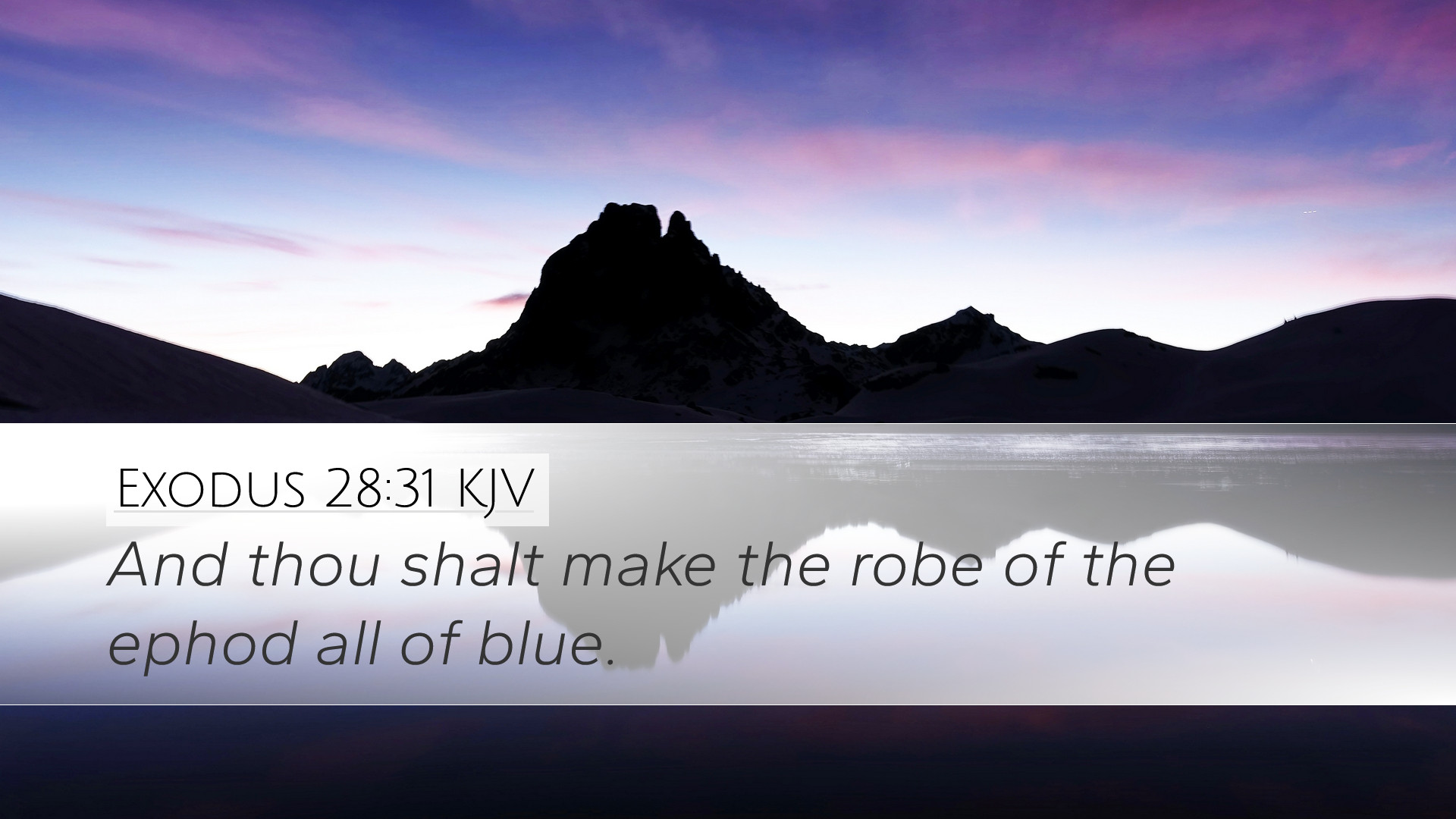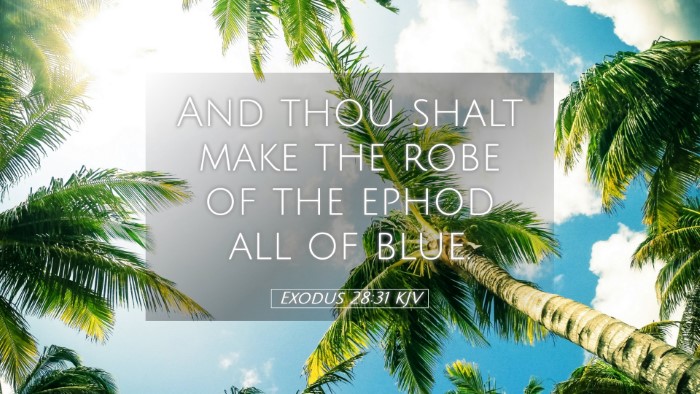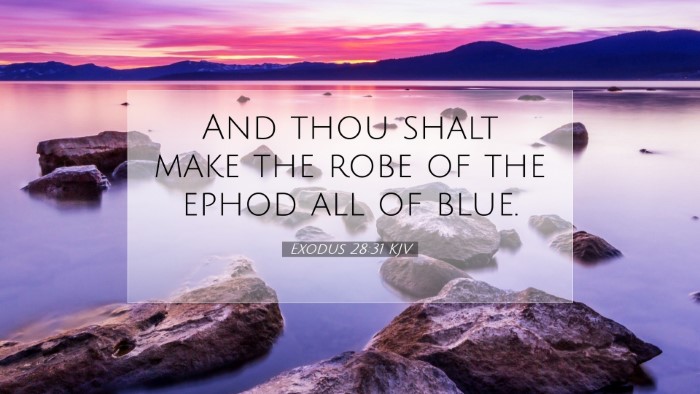Commentary on Exodus 28:31
Exodus 28:31 (ESV): "And you shall make the robe of the ephod all of blue."
Introduction
The passage of Exodus 28:31 is part of the divine instructions given to Moses regarding the construction of the garments for Aaron and his sons, who serve as priests before the Lord. This verse specifically addresses the making of the blue robe, which is a key element of the priestly attire, symbolizing various aspects of priestly duties and their relationship with God.
The Significance of the Blue Robe
The blue robe serves multiple purposes both aesthetically and spiritually. The color blue, as referenced in this garment, is often interpreted as a symbol of heavenly affiliation, representing the divine presence and the sky. It is a reminder of God's throne and His authority.
Symbolism and Meaning
-
Divine Authority: The blue robe indicates the authority vested in the priests as mediators between God and the people. It signifies that they are to serve under God's command and represent His holiness.
-
Spiritual Elevation: The color blue can also symbolize loyalty and constancy, reflecting the faithfulness required of the priests in their service.
-
Connection to the Heavenly: The robe reminds the priests and the Israelites of their ultimate destination—God's heavenly kingdom—and their duty to live in a manner that reflects His glory.
Insights from Commentators
Matthew Henry
Matthew Henry emphasizes the importance of the priestly garments as a reflection of the dignity and the responsibility of the office. He suggests that the robe being entirely of blue is meant to signify that the priests of the Old Testament were to be wholly devoted to God’s service. The distinctive color separates them, not just physically but spiritually, from the common people, marking them as human representatives of God’s holiness.
Albert Barnes
Albert Barnes discusses the practical aspects of the blue robe. He points out that making the robe entirely of blue fabric was not only a divine command but also served to unify the appearance of the priesthood. Barnes elucidates that this unification is crucial for conveying a message of integrity and consistency in worship and leadership within the community of Israel.
Adam Clarke
Adam Clarke notes that the blue robe's construction should be carefully adhered to as per divine instruction, reinforcing the necessity of obedience to God's ordinances. He interprets the blue robe as an emblem of the sacred duties the priests would perform and the divine service they were entrusted with, reflecting the gravity of their calling.
Theological Implications
The robe of blue, while specifically designated for the high priesthood, has broader implications for all believers. It draws on themes of separation, holiness, and mediation. In Christ, who fulfills the role of the ultimate High Priest, believers find their identity, purpose, and calling to be representatives of God's kingdom.
Priestly Mediation
The priests, adorned in their blue robes, acted as mediators, an idea rooted deeply in biblical theology. This role prefigures the mediating work of Jesus Christ. Just as the priests would enter the Holy Place with the blue robe signifying their role, today, believers enter the presence of God through faith in Christ, who intercedes for them.
The Believer’s Attire
Spiritually speaking, the blue robe can be seen as indicative of the believer's new identity in Christ. Scriptures such as Galatians 3:27 remind us that believers are clothed with Christ. Just as the robe distinguished the high priest, Christians are to bear the character and conduct of Christ in their lives, reflecting the holiness that is called for in their spiritual worship.
Conclusion
Exodus 28:31 not only instructs on the physical garment of the priesthood but also offers profound theological insights regarding holiness, mediation, and the nature of service to God. The blue robe symbolizes the high calling of the priests and serves as a reminder to all believers of their commitment to living a life devoted to serving God. In understanding the symbolism and significance of such details in scripture, pastors, students, theologians, and scholars can glean deeper insights into God’s holiness and the nature of our relationship with Him through Christ.


